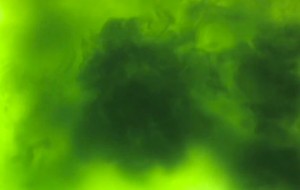DoorBot: Live Video Chat To Replace Doorbell
The doorbell has served humanity well over the years, preventing friends, loved ones and delivery people from standing unannounced outside of homes.
We can all agree the doorbell has had a nice run, but don’t you think it’s time for an upgrade?
Nuclear Medicine: Patch Kills Common Skin Cancer
Doctors were successful in the implementation of a new form of skin cancer treatment; a patch that can be worn on the skin. Many people don’t realize that human skin is actually an organ, and is capable of ‘breathing’ and absorption. The patch contained a radioactive isotope or radionuclide, phosphorus-32.
In the study, subjects were exposed to the radionuclide patch for three hours, thrice during one week. 80% of the subjects tested had unsightly tumors from their face completely eliminated via this easy radiation treatment. This breakthrough could provide an amazing alternative to expensive and difficult surgery or radiotherapy.
Hövding Personal Airbag, Invisible Helmet
“The Invisible Helmet”
The helmet, despite being a smart wear and crucial for risk takers, is often associated with being uncool and looking funny. What these people don’t realize is that breaking your neck and dying is similarly uncool. Lucky for those unwilling to buckle in, two Swedish designers have come up with a gadget that could revolutionize the head protection industry.
Dance Away Your Energy Bill
There are some pretty innovative ways of producing energy out there: we’re getting smarter, greener, and cheaper. The number of carbon neutral options available to us is constantly increasing. Wind, solar, ocean, and of course, pot generated are all pretty cool, but does it get much better than energy harvested from dancing?
January Domain Name Sales Report
Some staggering sales and good bargains highlight January’s domain name transaction crop.
The Automatic Bartender
If you’ve ever been to a bar, you know that the only thing worse than the overpriced drinks is the struggle to get the bartender’s attention. Everyone has their own theory on what works: bumping people out of the way, waving money around, yelling, or attempting to look sexy. There is no foolproof method to getting a drink at a crowded bar; that is, until now.
Real Life Cyborg That Can Hear Colors
Imagine you had achromatopsia and were unable to see any colors whatsoever. Would you roll over and deal with it? Or would you choose to become a cyborg?
Neil Harbisson decided to go with the latter.
Algae That Creates Light While Eating CO2
Carbon dioxide molecules have been scientifically proven to trap and retain heat. On Earth, this emulates a greenhouse effect of letting heat energy in, but not out.
Carbon dioxide (CO2) is the most well-known ‘greenhouse gas’, a byproduct of burning fossil fuels such as gasoline, methane and propane. The greater the number of these heat trapping molecules that exist, the more the Earth’s temperatures will continue to rise.
Trees naturally eat carbon dioxide, but on a per tree basis, they don’t consume much, about one ton in their lifetime. In order to keep the number of heat absorbing molecules down, we need more CO2 eaters here on the Earth. French biochemist Pierre Calleja has looked to algae for an innovation to curb this molecular issue.
Special: Three Dot Com Domains For $.99 Each
Are there some domain name you’ve been meaning to register but haven’t found the time or funds?
Just in time for Valentine’s Day, you can get up to three .com domains for one year for $.99 each.










